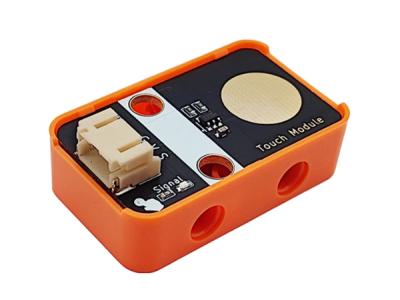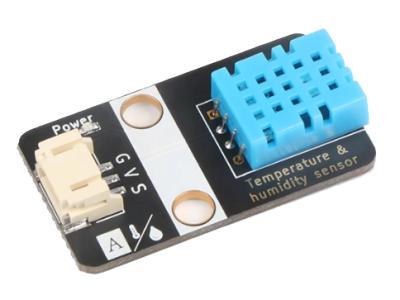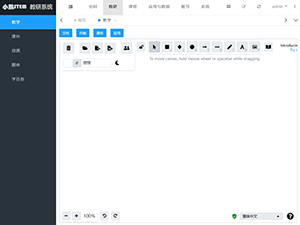EV3 直接命令 - 第 5 课 从 EV3 的传感器读取数据
读取传感器的类型和模式
我们从 EV3 设备的一些自反映开始并询问它:
- 端口 16 上连接了什么类型的设备?
- 端口 16 上的传感器的模式?
请给你的 EV3 发送如下的直接命令:
----------------------------------------
\ len \ cnt \ty\ hd \op\cd\la\no\ty\mo\
----------------------------------------
0x|0B:00|2A:00|00|02:00|99|05|00|10|60|61|
----------------------------------------
\ 11 \ 42 \re\ 0,2 \I \G \0 \16\0 \1 \
\ \ \ \ \n \E \ \ \ \ \
\ \ \ \ \p \T \ \ \ \ \
\ \ \ \ \u \_ \ \ \ \ \
\ \ \ \ \t \T \ \ \ \ \
\ \ \ \ \_ \Y \ \ \ \ \
\ \ \ \ \D \P \ \ \ \ \
\ \ \ \ \e \E \ \ \ \ \
\ \ \ \ \v \M \ \ \ \ \
\ \ \ \ \i \O \ \ \ \ \
\ \ \ \ \c \D \ \ \ \ \
\ \ \ \ \e \E \ \ \ \ \
----------------------------------------
一些说明:
- 我们以 CMD GET_TYPEMODE 使用操作 opInput_device
- 如果被用作传感器端口,电机端口 A 的编号为 16。
- 我们将获得两个数作为应答,类型和模式。
- 类型需要一个字节且将占据字节 0 的位置,模式也需要一个字节且被放在字节 1 的位置。
我获得了如下的回答:
----------------------
\ len \ cnt \rs\ty\mo\
----------------------
0x|05:00|2A:00|02|07|00|
----------------------
\ 5 \ 42 \ok\7 \0 \
----------------------
它是说:电机端口 A 处的传感器具有类型 7 且实际处于模式 0 中。如果你看一下文档 EV3 Firmware Developer Kit 的第 5 章,其标题为 Device type list,你发现类型 7 和模式 0 代表 EV3-Large-Motor-Degree。 ### EV3 Firmware Developer Kit。
读取电机的实际位置
我们来到一个非常有趣的问题:电机端口 A 的电机实际位置是多少?我发送了这个命令:
----------------------------------------------
\ len \ cnt \ty\ hd \op\cd\la\no\ty\mo\va\v1\
----------------------------------------------
0x|0D:00|2A:00|00|04:00|99|1C|00|10|07|00|01|60|
----------------------------------------------
\ 13 \ 42 \re\ 0,4 \I \R \0 \16\E \D \1 \0 \
\ \ \ \ \n \E \ \ \V \e \ \ \
\ \ \ \ \p \A \ \ \3 \g \ \ \
\ \ \ \ \u \D \ \ \- \r \ \ \
\ \ \ \ \t \Y \ \ \L \e \ \ \
\ \ \ \ \_ \_ \ \ \a \e \ \ \
\ \ \ \ \D \R \ \ \r \ \ \ \
\ \ \ \ \e \A \ \ \g \ \ \ \
\ \ \ \ \v \W \ \ \e \ \ \ \
\ \ \ \ \i \ \ \ \- \ \ \ \
\ \ \ \ \c \ \ \ \M \ \ \ \
\ \ \ \ \e \ \ \ \o \ \ \ \
\ \ \ \ \ \ \ \ \t \ \ \ \
\ \ \ \ \ \ \ \ \o \ \ \ \
\ \ \ \ \ \ \ \ \r \ \ \ \
----------------------------------------------
我得到了答复:
----------------------------
\ len \ cnt \rs\ degrees \
----------------------------
0x|07:00|2A:00|02|00:00:00:00|
----------------------------
\ 7 \ 42 \ok\ 0 \
----------------------------
然后我用手移动电机并再次发送相同的直接命令。这次回复是:
----------------------------
\ len \ cnt \rs\ degrees \
----------------------------
0x|07:00|2A:00|02|50:07:00:00|
----------------------------
\ 7 \ 42 \ok\ 1872 \
----------------------------
那是说:电机移动了 1, 872 度(5.2 周)。这似乎是对的!
技术细节
是时候看一下幕后的东西了!你需要理解:
- 端口编号的系统,
- 我们使用的操作的参数,和
- 如何定位并解包全局内存。
端口编号的系统
传感器有四个端口,电机有四个端口。传感器端口的编号是 1 到 4:
- 端口 1: PORT = 0x|00| 或 LCX(0)
- 端口 2: PORT = 0x|01| 或 LCX(1)
- 端口 3: PORT = 0x|02| 或 LCX(2)
- 端口 4: PORT = 0x|03| 或 LCX(3)
这似乎有点滑稽,但计算机通常从数字 0 开始计数,人类从数字 1 开始计数。我们刚刚了解到,电机也是传感器,我们可以从中读取电机的实际位置。电机端口标为字母 A 到 D,但通过如下方式定位:
- 端口 A: PORT = 0x|10| 或 LCX(16)
- 端口 B: PORT = 0x|11| 或 LCX(17)
- 端口 C: PORT = 0x|12| 或 LCX(18)
- 端口 D: PORT = 0x|13| 或 LCX(19)
我在我的模块 ev3.py 中添加了一个小函数:
def port_motor_input(port_output: int) -> bytes:
"""
get corresponding input motor port (from output motor port)
"""
if port_output == PORT_A:
return LCX(16)
elif port_output == PORT_B:
return LCX(17)
elif port_output == PORT_C:
return LCX(18)
elif port_output == PORT_D:
return LCX(19)
else:
raise ValueError("port_output needs to be one of the port numbers [1, 2, 4, 8]")
从电机输出端口转换到输入端口。
操作 opInput_Device
opInput_Device 的两个变体的简短描述,我们已经使用了:
- opInput_Device = 0x|99| 的 CMD GET_TYPEMODE = 0x|05|:
参数- (Data8) LAYER:链 layer 号
- (Data8) NO:端口编号
返回值
- (Data8) TYPE:设备类型
- (Data8) MODE:设备模式
- opInput_Device = 0x|99| 的 CMD READY_RAW = 0x|1C|:
参数- (Data8) LAYER:链 layer 号
- (Data8) NO:端口编号
- (Data8) TYPE:设备类型
- (Data8) MODE:设备模式
- (Data8) VALUES:返回值的个数
返回值 - (Data32) VALUE1:以特定模式从传感器接收的第一个值
这里 Data32 是说这是一个 32 位有符号整数。 返回的数据是值,但请记住,返回参数如 VALUE1 是引用。引用是局部或全局内存的地址。阅读下一部分了解详情。
寻址全局内存
在第 2 课中,我们介绍了常量参数和局部变量。你将记得,我们已经看到了 LCS,LC0,LC1,LC2,LC4,LV0,LV1,LV2 和 LV4,并写了三个函数 LCX(value:int),LVX(value:int) 和 LCS(value:str):
FUNCTIONS
LCS(value:str) -> bytes
pack a string into a LCS
LCX(value:int) -> bytes
create a LC0, LC1, LC2, LC4, dependent from the value
LVX(value:int) -> bytes
create a LV0, LV1, LV2, LV4, dependent from the value
我们讨论了标识字节,它定义了变量的类型和长度:
现在我们编写另一个函数 GVX,它返回全局内存的地址。如你已经知道的那样,标识字节的位 0 代表短格式或长格式:
- 0b 0... .... 短格式(只有一个字节,标识字节包含值)
- 0b 1... .... 长格式(标识字节不包含任何值的位)
如果位 1 和 2 是 0b .11. ....,它们代表全局变量,它们是全局内存的地址。
位 6 和 7 代表后续的值的长度
- 0b .... ..00 意味着可变长度,
- 0b .... ..01 意味着后面有一个字节,
- 0b .... ..10 是说,后面有两个字节,
- 0b .... ..11 是说,后面有四个字节。
现在我们写 4 个全局变量作为二进制掩码,我们不需要符号,因为地址总是正数。 V 代表地址(值)的一位。
- GV0: 0b 011V VVVV,5 位地址,范围:0 - 31,长度:1 字节,由前导位 011 标识。
- GV1:0b 1110 0001 VVVV VVVV,8 位地址,范围:0 - 255,长度:2 字节,由前导字节 0x|E1| 标识。
- GV2:0b 1110 0010 VVVV VVVV VVVV VVVV,16 位地址,范围:0 – 65.536,长度:3 字节,由前导字节 0x|E2| 标识。
- GV4:0b 1110 0011 VVVV VVVV VVVV VVVV VVVV VVVV VVVV VVVV,32 位地址,范围:0 – 4,294,967,296,长度:5 字节,由前导字节 0x|E3| 标识。
一些说明:
- 在直接命令中,不需要 GV4!你记得全局内存最多有 1019 个字节 (1024 - 5)。
- 必须正确放置全局内存的地址。 如果将 4 字节值写入全局内存,则其地址必须为 0,4,8,…(4的倍数)。 对于 2 字节值也是一样,它们的地址必须是 2 的倍数。
- 你将需要将全局内存拆分为所需长度的段,然后使用每个段的第一个字节的地址。我们的第一个例子中,我们需要两个段(类型和模式),每个段一个字节。因此我们使用 GV0(0) 和 GV0(1) 作为地址。
- 头字节包含全局内存的总长度(有关详细内容,请参阅第 1 课)。在我们的例子中,这些是2个字节 resp. 4字节。不要忘记正确发送头字节!
- 不要在段之间留下空隙!标准的工具诸如 struct.unpack 不喜欢它们。把 4 字节类型放在前面,然后是 2 字节类型以此类推。这使得对拆包进行编码比较方便。
一个新模块函数:GVX
请给你的 ev3 模块添加一个函数 GVX(value),依赖于值,它返回 GV0,GV1,GV2或 GV4 中最短的类型。我已经完成了,现在我的模块 ev3 的文档如下:
FUNCTIONS
GVX(value:int) -> bytes
create a GV0, GV1, GV2, GV4, dependent from the value
LCS(value:str) -> bytes
pack a string into a LCS
LCX(value:int) -> bytes
create a LC0, LC1, LC2, LC4, dependent from the value
LVX(value:int) -> bytes
create a LV0, LV1, LV2, LV4, dependent from the value
port_motor_input(port_output:int) -> bytes
get corresponding input motor port (from output motor port)
解包全局内存
我已经提到,已经有了解包全局内存的好工具了。在 Python 3 中,这个工具是 struct — Interpret bytes as packed binary data 。
一字节无符号整数
我的从电机端口 A 读取模式和类型的程序:
#!/usr/bin/env python3
import ev3, struct
my_ev3 = ev3.EV3(protocol=ev3.BLUETOOTH, host='00:16:53:42:2B:99')
my_ev3.verbosity = 1
ops = b''.join([
ev3.opInput_Device,
ev3.GET_TYPEMODE,
ev3.LCX(0), # LAYER
ev3.port_motor_input(PORT_A), # NO
ev3.GVX(0), # TYPE
ev3.GVX(1) # MODE
])
reply = my_ev3.send_direct_cmd(ops, global_mem=2)
(type, mode) = struct.unpack('BB', reply[5:])
print("type: {}, mode: {}".format(type, mode))
模式 ‘BB’ 把全局内存分为两个 1 字节的无符号整数值。这个程序的输出是:
08:08:13.477998 Sent 0x|0B:00|2A:00|00|02:00|99:05:00:10:60:61|
08:08:13.558793 Recv 0x|05:00|2A:00|02|07:00|
type: 7, mode: 0
四个字节的浮点数和四个字节的有符号整数
我的读取端口 A 和端口 D 上的电机的电机位置的程序:
#!/usr/bin/env python3
import ev3, struct
my_ev3 = ev3.EV3(protocol=ev3.BLUETOOTH, host='00:16:53:42:2B:99')
my_ev3.verbosity = 1
ops = b''.join([
ev3.opInput_Device,
ev3.READY_SI,
ev3.LCX(0), # LAYER
ev3.port_motor_input(PORT_A), # NO
ev3.LCX(7), # TYPE
ev3.LCX(0), # MODE
ev3.LCX(1), # VALUES
ev3.GVX(0), # VALUE1
ev3.opInput_Device,
ev3.READY_RAW,
ev3.LCX(0), # LAYER
ev3.port_motor_input(PORT_D), # NO
ev3.LCX(7), # TYPE
ev3.LCX(0), # MODE
ev3.LCX(1), # VALUES
ev3.GVX(4) # VALUE1
])
reply = my_ev3.send_direct_cmd(ops, global_mem=8)
(pos_a, pos_d) = struct.unpack('<fi', reply[5:])
print("positions in degrees (ports A and D): {} and {}".format(pos_a, pos_d))
格式 ‘<fi’ 将全局内存分为一个 4 字节的浮点数和一个 4 字节的有符号整数,都是小尾端的。输出是:
08:32:32.865522 Sent 0x|15:00|2A:00|00|08:00|99:1D:00:10:07:00:01:60:99:1C:00:13:07:00:01:64|
08:32:32.949266 Recv 0x|0B:00|2A:00|02|00:80:6C:C4:54:04:00:00|
positions in degrees (ports A and D): -946.0 and 1108
字符串
我们读取 EV3 设备的名字:
#!/usr/bin/env python3
import ev3, struct
my_ev3 = ev3.EV3(protocol=ev3.BLUETOOTH, host='00:16:53:42:2B:99')
my_ev3.verbosity = 1
ops = b''.join([
ev3.opCom_Get,
ev3.GET_BRICKNAME,
ev3.LCX(16), # LENGTH
ev3.GVX(0) # NAME
])
reply = my_ev3.send_direct_cmd(ops, global_mem=16)
(brickname,) = struct.unpack('16s', reply[5:])
brickname = brickname.split(b'\x00')[0]
brickname = brickname.decode("ascii")
print("Brickname:", brickname)
说明:
- 格式 ‘16s’ 描述了一个 16 字节的字符串。
- brickname = brickname.split(b’\x00’)[0] 占据了以 0 结尾的字符串的第一部分。你需要那样做是因为 EV3 设备不清除全局内存。在字符串的右端部分也许有一些垃圾。等一会儿,然后我将演示这个问题。
- brickname = brickname.decode(“ascii”) 从字节类型创建一个字符串类型。
这个程序的输出是:
08:55:00.098825 Sent 0x|0A:00|2B:00|00|10:00|D3:0D:81:20:60|
08:55:00.138258 Recv 0x|13:00|2B:00|02|6D:79:45:56:33:00:00:00:00:00:00:00:00:00:00:00|
Brickname: myEV3
带有垃圾的字符串
我们发送两个直接命令,第二个读取一个字符串:
#!/usr/bin/env python3
import ev3, struct
my_ev3 = ev3.EV3(protocol=ev3.BLUETOOTH, host='00:16:53:42:2B:99')
my_ev3.verbosity = 1
ops = b''.join([
ev3.opInput_Device,
ev3.READY_SI,
ev3.LCX(0), # LAYER
ev3.port_motor_input(PORT_A), # NO
ev3.LCX(7), # TYPE
ev3.LCX(0), # MODE
ev3.LCX(1), # VALUES
ev3.GVX(0), # VALUE1
ev3.opInput_Device,
ev3.READY_RAW,
ev3.LCX(0), # LAYER
ev3.port_motor_input(PORT_D), # NO
ev3.LCX(7), # TYPE
ev3.LCX(0), # MODE
ev3.LCX(1), # VALUES
ev3.GVX(4) # VALUE1
])
reply = my_ev3.send_direct_cmd(ops, global_mem=8)
(pos_a, pos_d) = struct.unpack('<fi', reply[5:])
print("positions in degrees (ports A and D): {} and {}".format(pos_a, pos_d))
ops = b''.join([
ev3.opCom_Get,
ev3.GET_BRICKNAME,
ev3.LCX(16), # LENGTH
ev3.GVX(0) # NAME
])
reply = my_ev3.send_direct_cmd(ops, global_mem=16)
这个程序的输出是:
09:13:30.379771 Sent 0x|15:00|2A:00|00|08:00|99:1D:00:10:07:00:01:60:99:1C:00:13:07:00:01:64|
09:13:30.433495 Recv 0x|0B:00|2A:00|02|00:08:90:C5:FE:F0:FF:FF|
positions in degrees (ports A and D): -4609.0 and -3842
09:13:30.433932 Sent 0x|0A:00|2B:00|00|10:00|D3:0D:81:20:60|
09:13:30.502499 Recv 0x|13:00|2B:00|02|6D:79:45:56:33:00:FF:FF:00:00:00:00:00:00:00:00|
以 0 结尾的字符串 ‘myEV3’ (0x|6D:79:45:56:33:00|) 的长度为 6 个字节。接下来的两个字节 (0x|FF:FF|) 是来自于第一个直接命令的垃圾。
最快的拇指
触屏传感器的类型编号为 16,且有两个模式,0: EV3-Touch 和 1: EV3-Bump。第一个测试,如果传感器实际被触摸了,第二个从上次清除传感器开始计算触摸。我们通过一个小程序演示这些模式。它计数,摸传感器在五秒钟内撞击的频率(请在端口 2 插入你的触摸传感器):
#!/usr/bin/env python3
import ev3, struct, time
my_ev3 = ev3.EV3(protocol=ev3.BLUETOOTH, host='00:16:53:42:2B:99')
def change_color(color) -> bytes:
return b''.join([
ev3.opUI_Write,
ev3.LED,
color
])
def play_sound(vol: int, freq: int, dur:int) -> bytes:
return b''.join([
ev3.opSound,
ev3.TONE,
ev3.LCX(vol),
ev3.LCX(freq),
ev3.LCX(dur)
])
def ready() -> None:
ops = change_color(ev3.LED_RED)
my_ev3.send_direct_cmd(ops)
time.sleep(3)
def steady() -> None:
ops_color = change_color(ev3.LED_ORANGE)
ops_sound = play_sound(1, 200, 60)
my_ev3.send_direct_cmd(ops_color + ops_sound)
time.sleep(0.25)
for i in range(3):
my_ev3.send_direct_cmd(ops_sound)
time.sleep(0.25)
def go() -> None:
ops_clear = b''.join([
ev3.opInput_Device,
ev3.CLR_CHANGES,
ev3.LCX(0), # LAYER
ev3.LCX(1) # NO
])
ops_color = change_color(ev3.LED_GREEN_FLASH)
ops_sound = play_sound(10, 200, 100)
my_ev3.send_direct_cmd(ops_clear + ops_color + ops_sound)
time.sleep(5)
def stop() -> None:
ops_read = b''.join([
ev3.opInput_Device,
ev3.READY_SI,
ev3.LCX(0), # LAYER
ev3.LCX(1), # NO
ev3.LCX(16), # TYPE - EV3-Touch
ev3.LCX(0), # MODE - Touch
ev3.LCX(1), # VALUES
ev3.GVX(0), # VALUE1
ev3.opInput_Device,
ev3.READY_SI,
ev3.LCX(0), # LAYER
ev3.LCX(1), # NO
ev3.LCX(16), # TYPE - EV3-Touch
ev3.LCX(1), # MODE - Bump
ev3.LCX(1), # VALUES
ev3.GVX(4) # VALUE1
])
ops_sound = play_sound(10, 200, 100)
reply = my_ev3.send_direct_cmd(ops_sound + ops_read, global_mem=8)
(touched, bumps) = struct.unpack('<ff', reply[5:])
if touched == 1:
bumps += 0.5
print(bumps, "bumps")
for i in range(3):
ready()
steady()
go()
stop()
ops_color = change_color(ev3.LED_GREEN)
my_ev3.send_direct_cmd(ops_color)
print("**** Game over ****")
我们使用了一个新操作:opInput_Device = 0x|99| 的 CMD CLR_CHANGES = 0x|1A|,有这些参数:
- (Data8) LAYER:链 layer 号
- (Data8) NO:端口编号
它清除传感器,所有它的内部数据被设置为初始值。
郁闷的长颈鹿
让我们编写一个程序,它使用类 TwoWheelVehicle 和红外传感器。红外传感器的类型编号为 33,它的模式 0 读取传感器前方的自由距离。我们使用它来探测小车前方的障碍和坑洞。转换你的小车并放置红外传感器,使其看向前方,但从上到下(向下约30 - 60°)。传感器读取小车前方的区域并在遇到意外状况时停止运动:
#!/usr/bin/env python3
import ev3, ev3_vehicle, struct, random
vehicle = ev3_vehicle.TwoWheelVehicle(
0.02128, # radius_wheel
0.1175, # tread
protocol=ev3.BLUETOOTH,
host='00:16:53:42:2B:99'
)
def distance() -> float:
ops = b''.join([
ev3.opInput_Device,
ev3.READY_SI,
ev3.LCX(0), # LAYER
ev3.LCX(0), # NO
ev3.LCX(33), # TYPE - EV3-IR
ev3.LCX(0), # MODE - Proximity
ev3.LCX(1), # VALUES
ev3.GVX(0) # VALUE1
])
reply = vehicle.send_direct_cmd(ops, global_mem=4)
return struct.unpack('<f', reply[5:])[0]
speed = 25
vehicle.move(speed, 0)
for i in range(10):
while True:
dist = distance()
if dist < 15 or dist > 20:
break
vehicle.stop()
vehicle.sync_mode = ev3.SYNC
angle = 135 + 45 * random.random()
if random.random() > 0.5:
vehicle.drive_turn(speed, 0, angle)
else:
vehicle.drive_turn(speed, 0, angle, right_turn=True)
vehicle.sync_mode = ev3.STD
speed -= 2
vehicle.move(speed, 0)
vehicle.stop()
一些注释:
- 如果你从 ev3-python3 下载了模块 ev3_vehicle.py,请消除属性 sync_mode 的设置(vehicle.sync_mode = ev3.SYNC 或 vehicle.sync_mode = ev3.STD)
- 算法的核心部分是:
while True:
dist = distance()
if dist < 15 or dist > 20:
break
vehicle.stop()
这个代码在自由距离小于 15 cm 或大于 20 cm 时(具体值依赖于对象的构造)停止运动。这是说:如果小车到了桌子的边缘(距离变大),它将停止,以及如果它到了一个障碍物处(小距离),它也将停止。
- 停止后,车辆以随机方向及随机角度开启(范围在 135 到 180°)。sync_mode 设置为 SYNC,我们想要程序等待直到转弯完成:
vehicle.sync_mode = ev3.SYNC
angle = 135 + 45 * random.random()
if random.random() > 0.5:
vehicle.drive_turn(speed, 0, angle)
else:
vehicle.drive_turn(speed, 0, angle, right_turn=True)
vehicle.sync_mode = ev3.STD
- 然后速度减小,小车向前移动,循环再次开始:
speed -= 2
vehicle.move(speed, 0)
- 循环数限制为10。
- 我的传感器放在一个装配长颈鹿颈部的结构上。这个以及越来越慢的运动就成了这个名字。
- 一个缺点是传感器直接向前聚焦。如果车辆以小角度移动到桌子的边缘或靠着障碍物,它将会识别它太晚。
技术上会发生什么?
- vehicle.move(speed, 0) 启动一个无限的运动,它不阻塞 EV3 设备。
- 这允许在小车运动时从传感器读取自由距离。
- 与第 3 课和第 4 课的远程控制的相似性非常重要,传感器取代了人类的思维。
- 仅有的阻塞 EV3 设备的行为是方法 drive_turn。这个命令需要 sync_mode = SYNC。幸运的是,在它执行时,我们不需要任何传感器数据。
现在是时候适配你的程序来满足你的需要和你的小车的构造了。我发现将小车放在桌面上,其中桌面的一部分被屏障隔开,是最令人印象深刻的。
导引头
红外传感器有另一种有趣的模式:seeker。这个模式读取 EV3 红外信标的方向和距离。信标允许在四个信号通道中选一个。请在端口 2 插入 IR 传感器,打开信标,选择一个通道,把它放在红外传感器的前方,然后运行这个程序:
#!/usr/bin/env python3
import ev3, struct
my_ev3 = ev3.EV3(protocol=ev3.BLUETOOTH, host='00:16:53:42:2B:99')
ops_read = b''.join([
ev3.opInput_Device,
ev3.READY_RAW,
ev3.LCX(0), # LAYER
ev3.LCX(1), # NO
ev3.LCX(33), # TYPE - IR
ev3.LCX(1), # MODE - Seeker
ev3.LCX(8), # VALUES
ev3.GVX(0), # VALUE1 - heading channel 1
ev3.GVX(4), # VALUE2 - proximity channel 1
ev3.GVX(8), # VALUE3 - heading channel 2
ev3.GVX(12), # VALUE4 - proximity channel 2
ev3.GVX(16), # VALUE5 - heading channel 3
ev3.GVX(20), # VALUE6 - proximity channel 3
ev3.GVX(24), # VALUE5 - heading channel 4
ev3.GVX(28) # VALUE6 - proximity channel 4
])
reply = my_ev3.send_direct_cmd(ops_read, global_mem=32)
(
h1, p1,
h2, p2,
h3, p3,
h4, p4,
) = struct.unpack('8i', reply[5:])
print("heading1: {}, proximity1: {}".format(h1, p1))
print("heading2: {}, proximity2: {}".format(h2, p2))
print("heading3: {}, proximity3: {}".format(h3, p3))
print("heading4: {}, proximity4: {}".format(h4, p4))
朝向的范围为 [-25 - 25],负值代表左,0 代表直行,正的代表右边。接近性的范围为 [0 - 100],且以 cm 计。这个操作读取所有 4 个通道,每个通道两个值。这个程序的输出是(seeker 通道是 2):
heading1: 0, proximity1: -2147483648
heading2: -21, proximity2: 27
heading3: 0, proximity3: -2147483648
heading4: 0, proximity4: -2147483648
信标放在红外传感器的左前方,距离为 27 cm。通道 1,3,和 4 返回一个距离值 -2147483648,它是 0x|00:00:00:80|(小尾端,最高位为 1,所有其它的为 0),表示 没信号。
PID 控制器
PID 控制器 持续计算错误值,作为所需设定值和测量过程变量之间的差值。控制器尝试通过控制变量的调整随时间最小化误差。这是一个伟大的算法,它修改一个过程的参数直到过程达到它的目的状态。最好的是,你不需要知道你的参数的精确依赖以及过程的状态。一个典型的例子是加热房间的暖气片。过程变量是房间的温度,控制器改变暖气片阀的位置直到房间温度稳定在设置的点。我们将使用 PID 控制器调整小车移动的参数 speed 和 turn。我们给模块 ev3 添加一个类 PID:
class PID():
"""
object to implement a PID controller
"""
def __init__(self,
setpoint: float,
gain_prop: float,
gain_der: float=None,
gain_int: float=None,
half_life: float=None
):
self._setpoint = setpoint
self._gain_prop = gain_prop
self._gain_int = gain_int
self._gain_der = gain_der
self._half_life = half_life
self._error = None
self._time = None
self._int = None
self._value = None
def control_signal(self, actual_value: float) -> float:
if self._value is None:
self._value = actual_value
self._time = time.time()
self._int = 0
self._error = self._setpoint - actual_value
return self._gain_prop * self._error
else:
time_act = time.time()
delta_time = time_act - self._time
self._time = time_act
if self._half_life is None:
self._value = actual_value
else:
fact1 = math.log(2) / self._half_life
fact2 = math.exp(-fact1 * delta_time)
self._value = fact2 * self._value + actual_value * (1 - fact2)
error = self._setpoint - self._value
if self._gain_int is None:
signal_int = 0
else:
self._int += error * delta_time
signal_int = self._gain_int * self._int
if self._gain_der is None:
signal_der = 0
else:
signal_der = self._gain_der * (error - self._error) / delta_time
self._error = error
return self._gain_prop * error + signal_int + signal_der
这实现了一个PID控制器,只有一个修改:half_life。实际值可能有噪声或通过离散步骤改变,我们对它们进行平滑,因为当实际值随机或离散变化时,导数部分将显示峰值。half_life 的维度 [s] 为时间,并且是阻尼的半衰期。但请记住:平滑控制器使其变得迟缓!
它的文档为:
class PID(builtins.object)
| object to implement a PID controller
|
| Methods defined here:
|
| __init__(self, setpoint:float, gain_prop:float, gain_der:float=None, gain_int:float=None, half_life:float=None)
| Parametrizes a new PID controller
|
| Arguments:
| setpoint: ideal value of the process variable
| gain_prop: proportional gain,
| high values result in fast adaption, but too high values produce oscillations or instabilities
|
| Keyword Arguments:
| gain_der: gain of the derivative part [s], decreases overshooting and settling time
| gain_int: gain of the integrative part [1/s], eliminates steady-state error, slower and smoother response
| half_life: used for discrete or noisy systems, smooths actual values [s]
|
| control_signal(self, actual_value:float) -> float
| calculates the control signal from the actual value
|
| Arguments:
| actual_value: actual measured process variable (will be compared to setpoint)
|
| Returns:
| control signal, which will be sent to the process
保持专注
请将红外传感器放在车辆上,水平放在前面。将其插入端口 2,选择信标通道 1,激活信标,然后启动这个程序:
#!/usr/bin/env python3
import ev3, ev3_vehicle, struct
vehicle = ev3_vehicle.TwoWheelVehicle(
0.02128, # radius_wheel
0.1175, # tread
protocol=ev3.BLUETOOTH,
host='00:16:53:42:2B:99'
)
ops_read = b''.join([
ev3.opInput_Device,
ev3.READY_RAW,
ev3.LCX(0), # LAYER
ev3.LCX(1), # NO
ev3.LCX(33), # TYPE - IR
ev3.LCX(1), # MODE - Seeker
ev3.LCX(2), # VALUES
ev3.GVX(0), # VALUE1 - heading channel 1
ev3.GVX(4) # VALUE2 - proximity channel 1
])
speed_ctrl = ev3.PID(0, 2, half_life=0.1, gain_der=0.2)
while True:
reply = vehicle.send_direct_cmd(ops_read, global_mem=8)
(heading, proximity) = struct.unpack('2i', reply[5:])
if proximity == -2147483648:
print("**** lost connection ****")
break
turn = 200
speed = round(speed_ctrl.control_signal(heading))
speed = max(-100, min(100, speed))
vehicle.move(speed, turn)
vehicle.stop()
说明:
- 我们选择了通道 1,这只允许读取该通道的值。
- 控制器不是一个 PID,它的 PD 带有平滑的值。
- 如果你移动信标,你的小车将改变它的方向并保持信标在它的眼镜的焦点上。
- 这个程序在关闭信标时停止。
- 前进方向是过程变量,其设定值为 0(直行)。通过将车辆转动到位来完成调整。
- 请改变 PD 控制器的参数以了解控制机制。
- 没有稳定状态错误,因为 control_signal == 0 将进程保持在稳定状态并且是唯一的稳定状态。
跟我来
我们稍微改变了程序的代码,但从根本上改变了它的含义:
#!/usr/bin/env python3
import ev3, ev3_vehicle, struct
vehicle = ev3_vehicle.TwoWheelVehicle(
0.02128, # radius_wheel
0.1175, # tread
protocol=ev3.BLUETOOTH,
host='00:16:53:42:2B:99'
)
ops_read = b''.join([
ev3.opInput_Device,
ev3.READY_RAW,
ev3.LCX(0), # LAYER
ev3.LCX(1), # NO
ev3.LCX(33), # TYPE - IR
ev3.LCX(1), # MODE - Seeker
ev3.LCX(2), # VALUES
ev3.GVX(0), # VALUE1 - heading channel 1
ev3.GVX(4) # VALUE2 - proximity channel 1
])
speed_ctrl = ev3.PID(10, 4, half_life=0.1, gain_der=0.2)
turn_ctrl = ev3.PID(0, 8, half_life=0.1, gain_der=0.3)
while True:
reply = vehicle.send_direct_cmd(ops_read, global_mem=8)
(heading, proximity) = struct.unpack('2i', reply[5:])
if proximity == -2147483648:
print("**** lost connection ****")
break
turn = round(turn_ctrl.control_signal(heading))
turn = max(-200, min(200, turn))
speed = round(-speed_ctrl.control_signal(proximity))
speed = max(-100, min(100, speed))
vehicle.move(speed, turn)
vehicle.stop()
这个程序使用 heading 来控制移动参数 turn 和 proximity 继而控制它的 speed。speed_ctrl的设定点是一个距离 (10 cm)。如果距离增长,控制器增加小车的速度。你可以减少 10 厘米以下的距离,然后车辆向后移动。控制器总是试图保持或达到信标和红外传感器距离为 10 厘米的状态。请改变两个传感器的参数。
如果信标稳定向前移动并且车辆跟随信标会发生什么?这就像驾驶车队一样,可以研究稳态误差。则 speed = gain_prop * error,即 speed = gain_prop * (proximity - setpoint)。这是说:proximity = speed / gain_prop + setpoint。信标和传感器之间的稳定距离随着速度从 10 cm (speed == 0) 到 35 cm (speed == 100) 的增加而增加。如果我们模拟车辆车队,这正是我们想要的。
我们可以设置 gain_int 为一个正值。甚至非常小的值将消除稳态误差。巡航将保持在 10 cm 的距离,甚至在高速的情况下。
结论
这一课是关于传感器值的。我们已经看到,电机也是传感器,它允许我们读取实际的电机位置。我们写了一些小程序,使用红外传感器来控制带有两个驱动轮的车辆的运动。这是我们第一个真正的机器人程序。读取传感器值的机器,可以对环境作出反应。
我们获得了一些 PID 控制器方面的经验,PID 控制器是受控过程的行业标准。调整它们的参数取代了复杂算法的编码。我们的程序,使用PID控制器是惊人的紧凑和惊人的统一。PID控制器似乎功能强大且通用。
下一课将改进我们的类 TwoWheelVehicle,并为多任务做好准备。我期待着再次见到你。
链接:https://blog.csdn.net/tq08g2z/article/details/84792702
涨知识
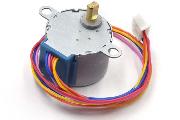
步进电机
步进电机是将电脉冲信号,转变为角位移或线位移的开环控制电机,又称为脉冲电机。
评论:
学完EV3/SPIKE相关课程后接着学什么?
应该有不少给孩子报了EV3/SPIKE兴趣班的家长们,对孩子后面应该学什么是没有明确认知的吧,本文来探讨下后续学什么和怎么学。

Scratch 3.0连接EV3
本文介绍如何在Scratch中对EV3机器人进行开发。

Arduino 高级编程:控制乐高EV3马达
本文介绍一种使用Arduino开发板控制乐高EV3马达的方法。

Java 机器人编程入门手册(四)
在这一章中,你将学习一组传感器,它们被用来执行有根据的动作。
Java 机器人编程入门手册(三)
在本章中,您将学习启发式搜索策略背后的基本思想以及如何实现爬山算法,这是 leJOS EV3 中最典型的启发式方法之一。
Java 机器人编程入门手册(二)
这一章向你介绍了在莱霍斯 EV3 使用的笛卡尔坐标系的基础知识。它还教你如何在导航课程中应用编程方法来控制轮式车辆,以便在二维平面中用坐标描绘出预定义的路径。
Java 机器人编程入门手册(一)
本章提供了如何使用乐高 MindStorm EV3 公司建立 Java 机器人编程环境的分步指南,包括乐高 MindStorm EV3 的基本概述和leJOS-EV3的介绍。
乐高EV3遥控车搭建与编程指南
乐高EV3遥控车:从搭建到编程的全面指南
M5 EV3电机底座
Base X 是一款兼容乐高 EV3 电机的专用底座,可同时接入 4 路(RJ11)乐高电机,支持角度 / 速度的读取和控制,完美兼容原有电机功能。
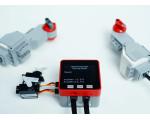
乐高EV3 Java固件leJOS
leJOS是Lego Mindstorms可编程砖的固件替代品。 该软件的不同变体支持原始机器人发明系统,NXT和EV3。




